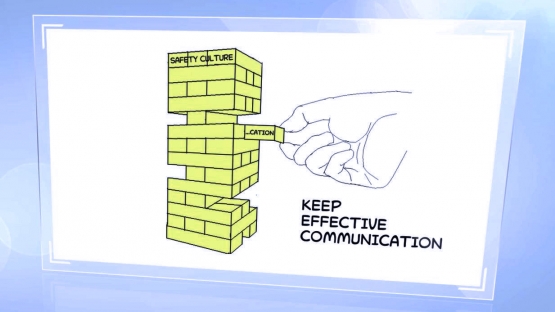Three digital projects that showcase how healthcare professionals building a strong radiation safety culture won the top prizes in the IAEA competition Towards a Strong Radiation Safety Culture in Medicine. The winners, from Greece, the United States and New Zealand, were selected among more than 100 submissions.
The competition entries were judged on their relevance to safety culture, on the clarity of their messages and on innovation in their presentation of the content. Anastasia Sarchosoglou from Greece placed first, followed by Leah Kayomi Schubert from the United States and Darin Steven O’Keeffe from New Zealand. All three will be invited to travel to Vienna in January 2020 to present their projects at the launch of a new IAEA training course on radiation safety culture in medicine.
“We have received many innovative and engaging submissions from all corners of the world. The high interest indicates a wide understanding of the need to use creativity to prevent errors in radiology, nuclear medicine and radiotherapy,” said Debbie Gilley, IAEA Radiation Protection Specialist.
Safety culture encompasses people, their attitudes, and how they shape relationships in daily work. In medicine, it involves qualified staff who prioritize the safety of patients.
“We decided to participate in the competition because we have seen that many problems in healthcare arise due to the lack of safety culture,” said competition winner Sarchosoglou, a radiographer from General Oncological Hospital of Kifisia in Greece, who developed a project together with Rodanthi Karavelaki.
The winning entries will be used as part of a training programme the IAEA is developing to support governments, diagnostic imaging and radiotherapy facilities and professional organizations in their efforts to strengthen their radiation safety culture in medicine. The programme addresses 10 safety traits that are essential for improving radiation safety culture in medical institutions.
Sarchosoglou highlighted safety communication in her project. “We created a video related to this particular trait because we strongly believe that without effective communication, a safety culture could not be developed at all,” she said. Her entry highlights how communication barriers can lead to misunderstandings and offers communication tips for health professionals.
The other two winners focused on leadership and the importance of a questioning attitude. Schubert showed the impact of her hospital’s habit of designating one month per year as Safety Month. During that month, annual safety training is conducted, and safety topics and new initiatives communicated.
O’Keeffe used his project to underline the importance of challenging colleagues’ assumptions and offer contradicting views when something appears to be wrong. In some cases, he recommends that a time-out be called to improve safety.
The other traits of safety culture in medicine are: personal accountability, decision-making, respectful work environment, continuous learning, problem identification and resolution, environment for raising concerns, and functioning work processes in place.
On 17 September, which has been designated International Patient Safety Day by health stakeholders, the IAEA will host a panel discussion on safety culture involving a medical director, a cancer survivor, a radiologist and a radiation protection specialist. The discussion is an IAEA General Conference side event and will be livestreamed on Facebook and Twitter.





